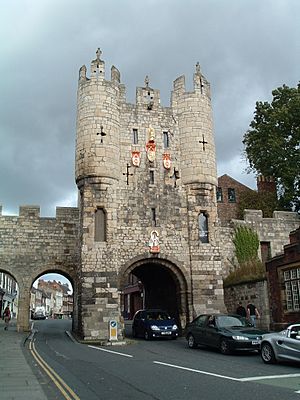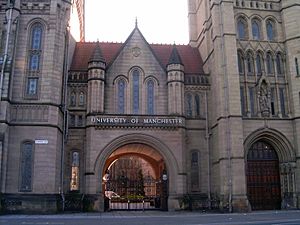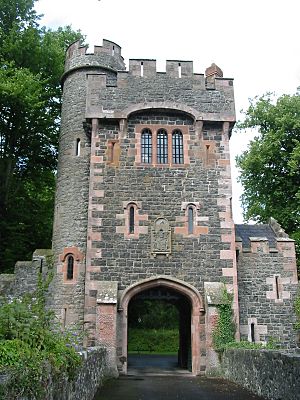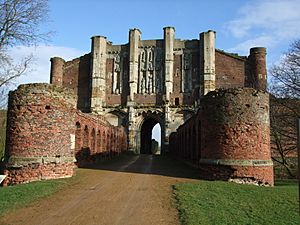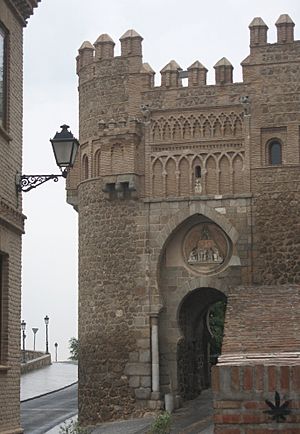Gatehouse facts for kids
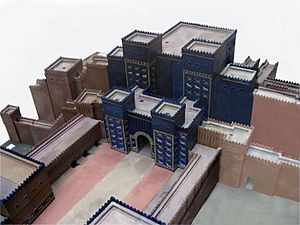
A gatehouse is a strong building that stands over the main entrance to a castle, manor house, or even a city. Imagine it as a special guard post for the main gate! Gatehouses were built to protect important places. Sometimes, they even guarded a town by being placed across a bridge, a river, or a moat, like the one in Monmouth.
In architecture, a gatehouse is a building that surrounds or goes with a gateway. These gateways lead to important places like castles, forts, or towns.
History of Gatehouses

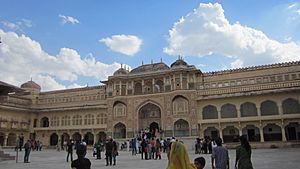
Gatehouses first appeared a very long time ago, in ancient times. People needed a way to protect the main entrance to their castles or towns. Over many years, gatehouses became very complex buildings with many ways to defend them.
Strong gatehouses often had a drawbridge that could be pulled up to block the entrance. They also had one or more portcullises, which were heavy iron grates that could be lowered quickly. To attack enemies, defenders used machicolations (holes in the floor above the entrance to drop things like stones) and arrow loops (narrow openings for archers to shoot arrows through). Some even had "murder-holes" where stones or hot liquids could be dropped on attackers below.
In some castles, the gatehouse was built so strongly that it acted like the main tower or keep of the castle. These were sometimes called "gate keeps." Good examples of these can be seen at Bodiam Castle and Beaumaris Castle in England. Later, some of the arrow loops were changed into gun loops for early firearms.
Sometimes, gatehouses were part of a town's defenses. They might protect a bridge over a river or a moat, like the Monnow Bridge in Monmouth, Wales. The city of York in England has four important gatehouses, called "Bars," that are part of its city walls. One famous one is Micklegate Bar.
In France, a gatehouse was sometimes called a logis-porche. This could be a large building that was both a gateway and a place to live. A very big gatehouse might be called a châtelet, which means "small castle."
By the end of the Middle Ages, many gatehouses in England and France changed. They became beautiful, grand entrances to large homes or estates instead of just defensive buildings. Many of them stood alone or were connected to the main house only by a wall. At this point, the gatehouse was no longer mainly for defense. It became more of a grand structure designed to match the beauty of the house it belonged to.
You can still see many old gatehouses today in countries like France, Austria, and Germany. In South India, very tall gatehouses called gopurams are often the main features of large Hindu temple complexes. Usually, there are four of these impressive gatehouses around the temple.
Images for kids
See also
 In Spanish: Casa del guarda para niños
In Spanish: Casa del guarda para niños


